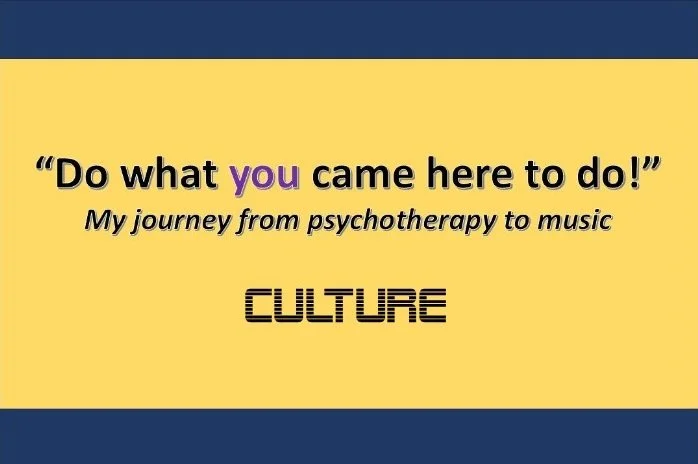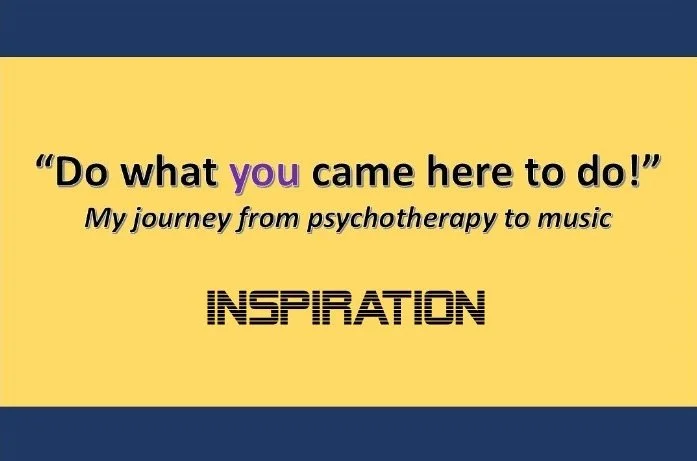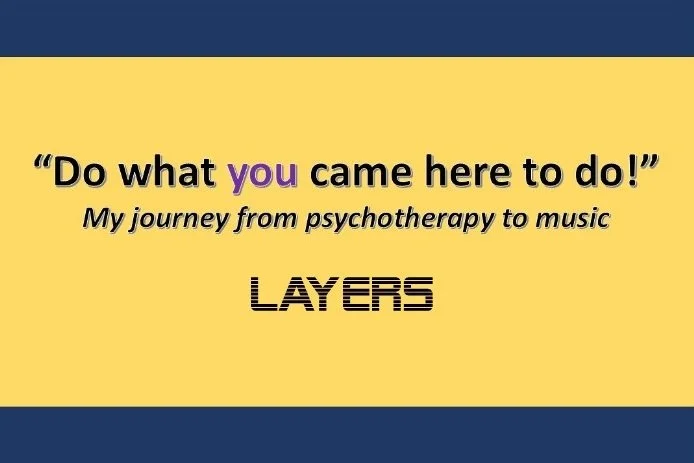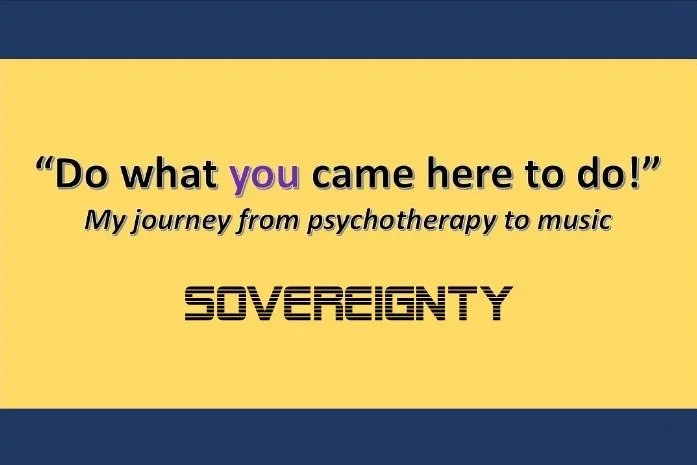The Music Blog

There and back again
Flying has always been fun for me. I never run out of amazement for airplane flight. I’ve always enjoyed getting up in the air to read a good book and imagine how things work down on Earth. However, taking off and landing is especially exciting for me. It takes a lot of energy to get a plane to cruising altitude and to bring it back down. Lately though, I’ve come to appreciate the cost of it all, how much integration between people, machines, and the environment goes into it all, and the pros and cons involved. Starting a new career in music is a similar process. There’s lot’s of energy spent on the front end. For me that’s meant a return to school, studying, practicing, and going through the paces of being a rookie with a new instrument. I haven’t reached cruising altitude yet, but its also not my first flight. In this final installment of “Do What You Came Here To Do”, I’ll look back on the music journey that led me here. As I have migrated through different soundscapes, I’ve picked up elements of a variety of styles and forms of music. I’ll explore the concept of migration as it applies to my music travels. Beginning with a school marching band.

Irish eyes
I grew up a first generation immigrant. My father’s were brown. He came to the US from Italy. My mother’s eyes were blue. Her family was from the US. I remember my paternal grandfather commenting on the color of my eyes. They were sometimes blue and sometime green depending on the color shirt I wore. Only recently did I learn from DNA testing that I’m 52.3% Northwestern European and only 47.6% Southern European. My Northwestern European ancestry is composed of 46.3% French & German and only 6% British & Irish. Yet when my mother introduced me to Loreena McKennitt’s celtic music, I was hooked. My eyes shone green that day, I’m sure of it. After leaving home as a young man I continued to hear Loreena on Fiona Riche’s Thistle & Shamrock radio program. I’ve yet to make the trip to Ireland, but I know when I do, I will head straight for a pub to listen to the sessions.

Everyday soundtracks
Some soundtracks can inspire deep reflection and contemplation. In “Woodpecker” and “When it Rains it Pours” I used video from where I live in Pennsylvania. My mother was an avid bird watcher and I used to enjoy learning about birds with her. I was surprised to find a pileated woodpecker on the tow path willing to give me to get a 2 minute video. I wasn’t sure how I would approach the music. It just so happened that I was working on my tremolo picking technique at the time. What a coincidence. I decided to focus on the woodpecker itself and not abstract much else out of the subject of the piece. At first I was stumped by capturing the rhythm. Woodpeckers don’t constantly peck. They don’t create an ostinato pattern of pecking that would make it easy. To accommodate, I used two drum samples of similar timbre but different rhythms and spread them out asymmetrically to capture a more natural woodpecker like pattern.

Music runs deep
The layering of melody and harmony over a rhythm while structuring movements and experimenting with textures, dynamics, tempo, pitch, time, and timbre transforms mind into embodied spirits. There is no stock formula for that works for everyone. Not all music moves us the same, but when it does, it’s a whole body experience, involving all of our senses. When making the music videos, “Everybody Sing Freedom” and “Recitatif Remix/Lookin Back”, I was inspired by memories of hearing Martin Luther King Jr.’s speeches and reading Toni Morrison’s novels. They both had a way of reminding us that we are all human and that freedom to be human is what real freedom is all about. Of course, we can’t see that on the surface of their work. We have to let it sink in and work on us.

From transcriptions to compositions
There are some fundamental practices that come easy in music and some that we like to avoid. I can sit for hours on end and practice exercises in technique. When I do, I undoubtedly come up with a catchy lick, melody, or concept that turns into a song. I enjoy stopping everything and running with my ideas. However, ask me to transcribe a guitar solo and learn to play it note for note and I suddenly get bogged down with procrastination. Nonetheless, I find the things I avoid like transcription and using a metronome, feed my inclination to compose and create. We all have work to do on what we are avoiding.

Changes in music, changes in life
My focus at school was on jazz guitar, a style of music known for “playing through changes”. It didn’t take long for me to experience how life lessons mirror music lessons. I had been both a student of the mind and a baseball player. I knew going in that mental activity is inseparable from movement. Even when the two appear separate, it is merely an illusion of attention. In both psychotherapy and baseball we devote intense mental study to guide the briefest of movements. Improvising through the simplest of ii - V - I chord progressions was no different. Life goals and playing music require we align and re-align our attention with our movement, constantly as we play through the changes.

Next…
Here you will find ideas about consciousness, information, relationships, and creativity. You’ll find the last 2 blog series that cover what I’ve learned as a psychotherapist. What remains of this blog is devoted to music. Sometimes art can shed light on experiences we have that, combined with a scientific perspective, illuminate what it’s like to be human in the most sublime ways.

EMDR as it is… Sensing and Connecting
I find this fact fascinating. As it turns out a tiger brain is shaped by experience over years of socialization just as humans are. Their brain is open to being shaped by the environment they are born into. They also learn best growing up in their umwelt with guidance from those animals who are equipped with the sensibilities they have. Despite our best intentions, we will never experience the world as a tiger does. That doesn’t make us more or less advanced, just different. As we learned in installment #1, even organisms without a nervous system process information to live. They just get there in their own way.

EMDR as it is… Sensing and Communicating
In AIP therapy, we make up each other’s umwelt. All organisms come into the world adapted to their umwelt and ours is the social environment. To sense and feel our way around it (like a turtle sensing magnetic north to navigate back to breeding grounds) we need Information processing that includes the establishment and maintenance of a mental model of self and other. Mental models generate the interpersonal environment within which we describe and predict how to collaboratively meet our needs. We imagine what we need, what we think others think we need, and what we think others need. This process often referred to as theory of mind, allows us to navigate in the social environment by communicating about our inner and outer experiences.

EMDR as it is… Sensing and Attending
It is not uncommon to read about the profound bonding that takes place between a mother and infant during moments of gazing at one another. The “gaze transactions” involved in human attachment have been studied considerably and highlighted as central to our development in the field of interpersonal neurobiology. At the heart of these exchanges is information processing. However, our relationships with our pets can be the most convincing of teachers of why the relationship in EMDR is the healing system.